Round Six — Challah Crowns

I’m looking at a palm tree outside the window right now. Palm tree in Illinois, you ask? No, no. I am in Florida visiting my in-laws with Elliott, basking in the Southern sun (perhaps a little too much — my face is rather lobster-ish in color) and taking a respite from the hustle and bustle of regular life.
And what a week of hustle and bustle it was. Working, packing for vacation and spending 48 hours in the role of “bridesmaid” for my dear friend Kathy’s wedding left me with little time to write about, let alone bake, any bread in the past eleven days. But somehow I managed to squeeze in some one-on-one time with a recipe so delicious, it’ll leave you with sweet-smelling memories that will tantalize your nostrils for hours even after you’ve devoured the bread.
This time, I crossed over the threshold of egg breads and plunged into the depths of a challah crowns recipe reminiscent of the Jewish tradition generally reserved for high holidays, including Rosh Hashana. Though I am no Jew, there was something sacred about the wafted smell of the loaf as it baked in the oven, somewhat similar to incense or the sweet smoke diffused by a censer at a Catholic mass (ironic comparison, I know).
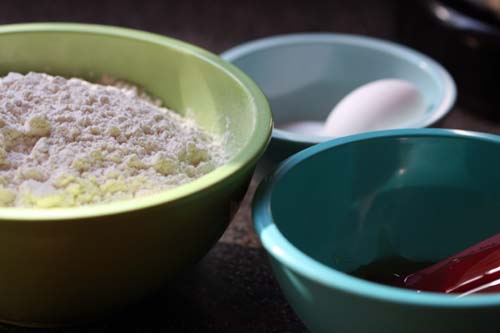
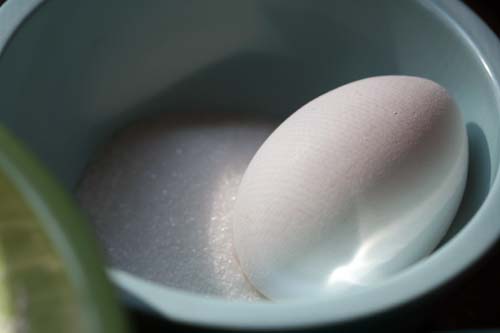
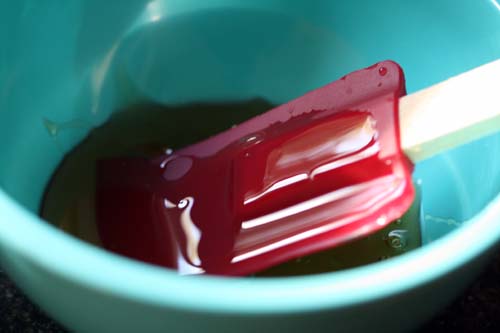
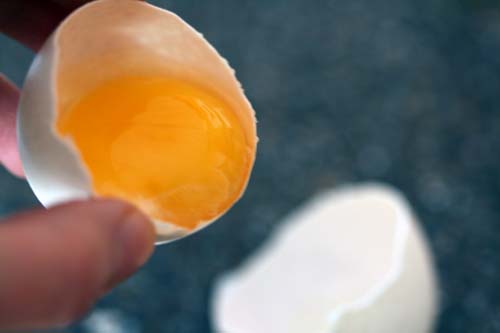
The loaves (this recipe makes two crowns) were fairly simple to assemble, though it can get a little confusing when encountering the constant additions of multiple ingredients (i.e., add a whole egg… add two egg yolks… a dash of sugar here, a pinch of salt there, etc. etc.). All seemed to go according to plan until the dough refused to double in size. Though it rose a little bit each time, overall the dough never grew past half of its original bulk, thus leaving the final product perhaps a tad smaller than intended.
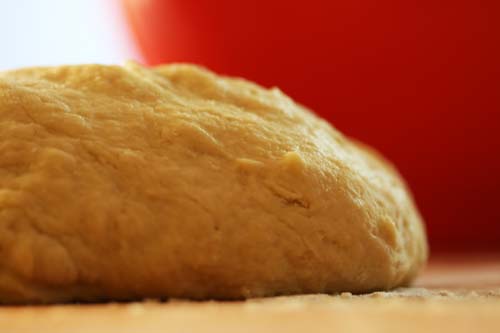
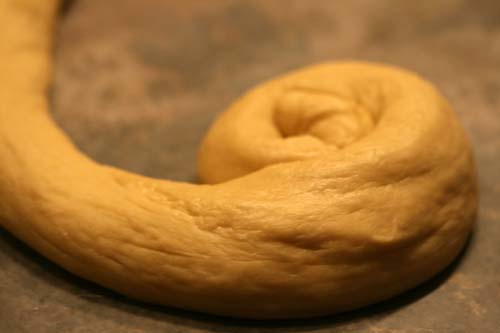
The taste of this bread was so delectable, it was almost dessert-like. Fluffy but dense, sweet and yet slightly comparable to potato bread, these crowning achievements brought me to another world where I half-expected my father to return from the fields after a hard day’s work and plop down into a seat at the head of the table, ready to give a prayer into the swirls of Challah-sweetened air before the commencement of the family’s Sabbath meal.
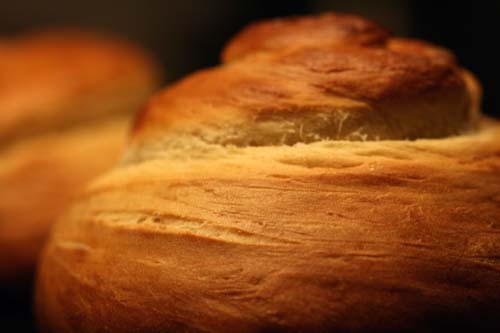
Though I don’t celebrate the Sabbath, this past week was filled with enough celebration to give me the excuse to bake the sacred bread. My husband and I were blessed with the chance to take a vacation from life’s usual hecticness, and one of my best friends whom I’ve known for 17 years just got married to a wonderful person. A high holiday, indeed.
Debrief: Next time I bake these crowns, I will steer clear of the wax paper I used in place of parchment paper. There is a difference. I know, because when using wax paper the kitchen became so smoky that we had to open all the windows and doors to avoid setting off the smoke alarm. Also, though the crowns themselves baked perfectly, the bottoms were completely black and I had to shave off the inedible bases.
Challah Crowns
courtesy of Food Network Kitchens
Ingredients:
4 cups all-purpose flour (1 pound, 1 3/8 ounces), plus up to 3/4 cup (3 1/2 ounces) more for kneading
2 tablespoons sugar (7/8 ounce)
2 1/4 teaspoons rapid rise yeast (1/4 ounce package) (I used active dry yeast; could have been why my dough didn’t rise so well?)
1 cup warm water, about 110 degrees F
1/3 cup honey
2 whole large eggs
3 large egg yolks
1/4 cup extra-virgin olive oil
1 tablespoon kosher salt
1 tablespoon poppy seeds (optional) (I didn’t use these due to personal preference)
Directions:
Whisk the flour, sugar, and yeast together in a large bowl and make a well in the center.
Whisk the water and honey with 1 whole egg, all the yolks, olive oil, and salt in a small bowl and pour into the well. Stir the wet ingredients into the dry ingredients with a wooden spoon to make a soft, shaggy, moist dough. Turn the dough out on a lightly floured surface and knead by hand, adding up to 3/4 cup more flour as needed, until the dough is soft and supple, about 8 minutes. Shape the dough into a ball.
Brush a large bowl with oil and turn dough around in bowl to coat lightly. Cover bowl with a clean kitchen towel and set aside until dough doubles in size, about 1 hour. Turn dough onto a lightly floured surface; knead briefly to release excess air, re-shape into a ball and return to the bowl. Cover and set aside until doubled in size, about 1 hour.
Line 2 baking sheet pans with parchment paper (parchment! PARCHMENT!). Divide the dough in half. Lightly dust hands with flour and roll each portion of dough into a 30-inch-long log. (If dough resists, then cover and let rest for 5 or 10 minutes before shaping). Spiral each length of dough around itself to form a coiled round loaf on the prepared pans. Lightly stretch the end of the coil and moisten it with water; gently press the end into the side of the round to seal the coil into a loaf. Press down on the loaves gently, cover with a kitchen towel and set aside until doubled, about 1 hour.
Position a rack in the center of the oven and preheat to 450 degrees F. Beat the remaining egg with a tablespoon of water and brush loaves evenly with it; sprinkle with poppy seeds if desired. Put the loaves in the oven and immediately turn the oven down to 400 degrees, and bake until golden brown and an instant-read thermometer inserted into the center of the crown registers 190 degrees F, about 30 to 35 minutes.

These are simply beautiful Steph, dear!